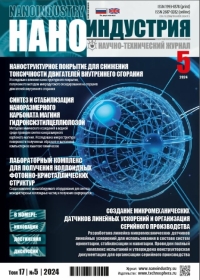DEVELOPMENT OF A WIDE-FIELD SCANNERPROFILOMETER AND NEW METHODS OF HARDNESS MEASUREMENT FOR THE FIRST EARTH SATELLITE ATOMIC FORCE MICROSCOPE IN THE WORLD
A new design of scanner for atomic force microscope-satellite is proposed and worked out. The scanner is intended to work for several years in autonomous mode in open space to study orbits for the content of micro- and nanoparticles of dust and is based on profilometer as one of the scanning axes. The microscope equipped this scanner is designed and tested for resistance to overloads up to 50g at launch, power consumption of no more than 1 W from solar batteries, resistant to streams of fast solar plasma ions, has a large scanning field of the open-to-space mirror for detection and study of particles falling on it even if their number is small. It is shown that the inductive sensor with linear drive used in profilometers with a linear drive of several tens of millimeters can be upgraded to a resolution of 1 nm, both in relief heights by reducing the magnetic gap and laterally by using ultra-sharp diamond needles with a tip of several atoms at the end. The use of a second linear actuator for the second coordinate provides line-by-line scanning of large areas with nanometre accuracy and with the number of dots up to 10 Gigapixels, while scanning one frame in a few days is quite acceptable for a space experiment lasting several years in autonomous mode. New methods of measuring hardness of bulk materials and thin films, which have a number of fundamental advantages and do not require any other devices in presence of profilometers or probe microscopes, have been developed when selecting the microscope mirror material. Mock-ups of the main units of the new scanner were manufactured and tested, which showed its performance in principle and made it possible to start patenting and manufacturing of the flight version of the autonomous space atomic force microscope, which claims to be "the first in the world".

 rus
rus


